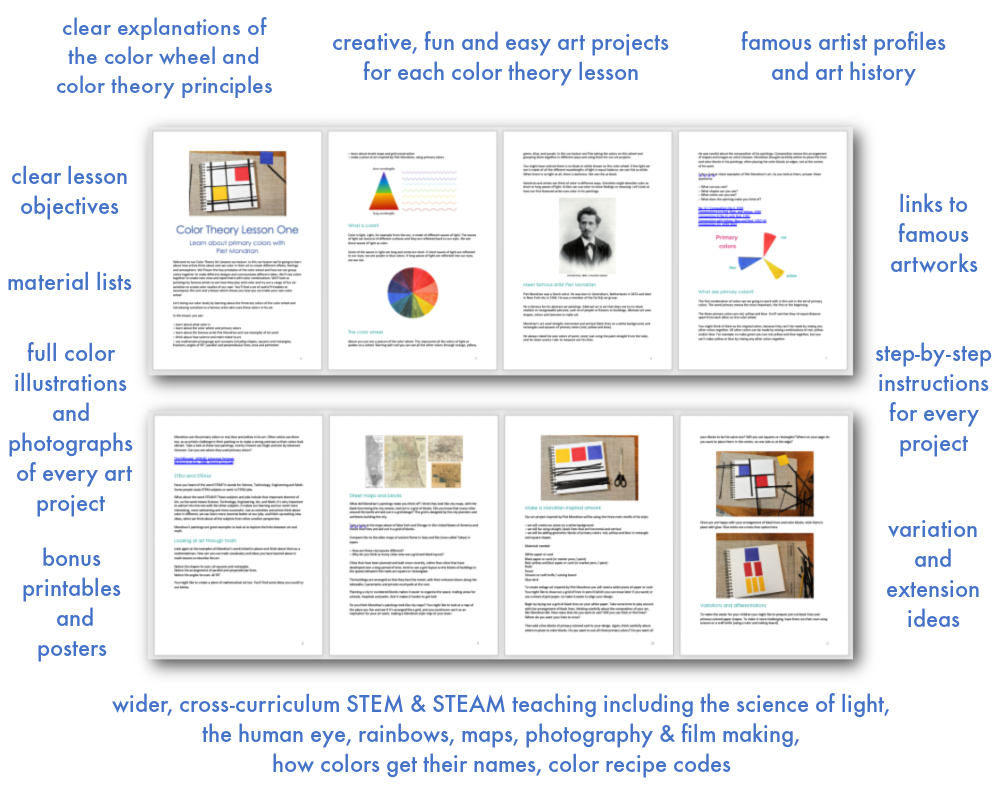Introduce your children to famous artist Georges Seurat with this easy pointillism art lesson. We’ll learn about the color wheel as we experiment with color mixing, turning primary colors into secondary colors. Plus we’ll learn how the human eye works, and what makes a rainbow.
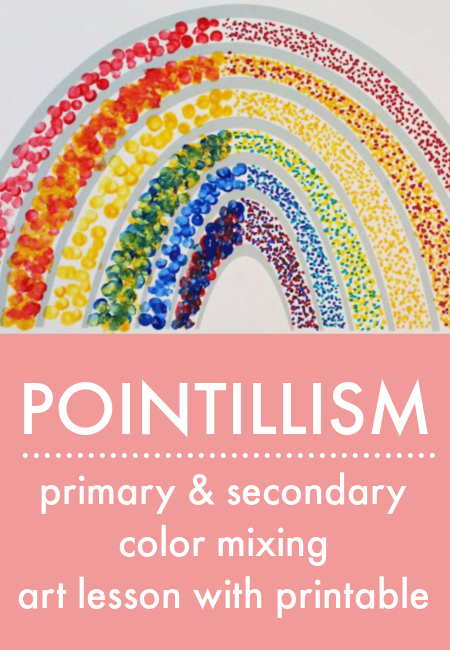
Easy pointillism art lesson for children mixing primary and secondary colors
This easy pointillism art lesson for children is part of our color theory lessons curriculum within our art lessons and craft activities for children.
In this second lesson in our Color Theory Art Lessons we will mix primary colors to create secondary colors and make a rainbow in your choice of materials. We will look at the work of famous artist Georges Seurat and learn about Pointillism art. We will also learn about rainbows and how our eyes work.
In this lesson you can:
:: learn about the color wheel and secondary colors
:: learn about the famous artist Georges Seurat and see examples of his work
:: learn about Pointillism art and think about how the eye sees color
:: learn about rainbows
:: make a piece of art inspired by Georges Seurat, using primary colors to mix secondary colors
:: get more ready-made color theory art lessons to teach your children about the color wheel
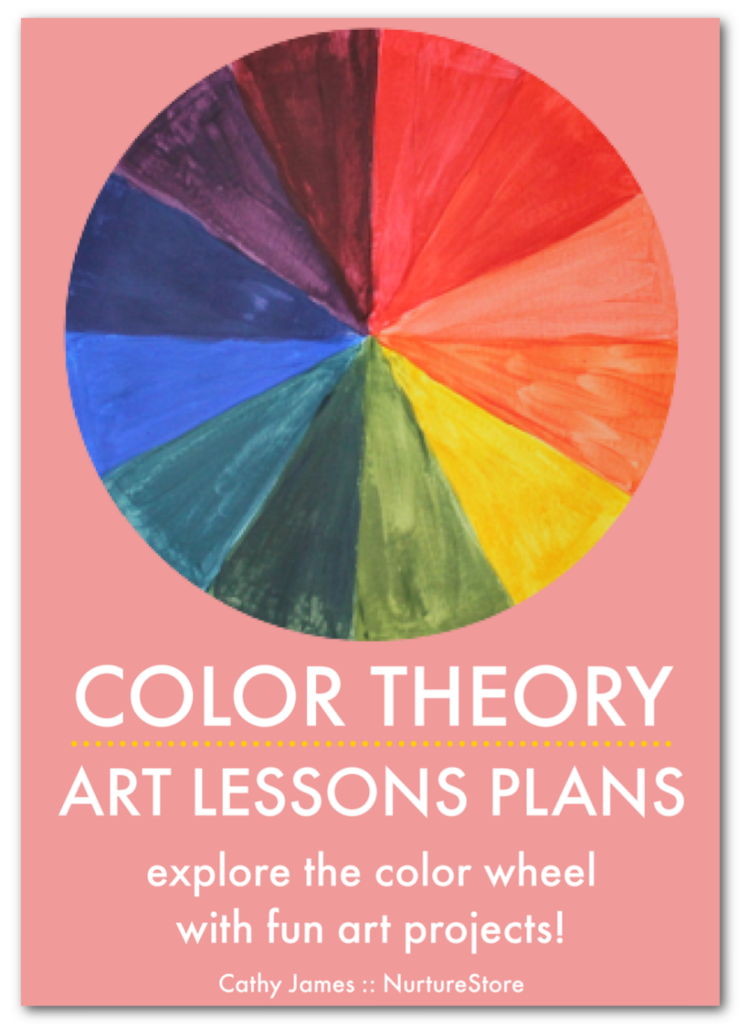
Get all our Color Theory art lesson plans
The best way to teach color theory to your children is to use our ready-made Color Theory Art Lesson Plans. Our Color Theory curriculum gives you all the resources you need to learn about the color wheel and color theory with easy and fun art projects for every lesson.
The kit includes includes art history guides, famous artist profiles, and wider cross-curricular lessons in science, math, language arts and world culture, plus bonus printables and posters to make your teaching even easier.
See more details of our Color Theory curriculum and get your copy here.
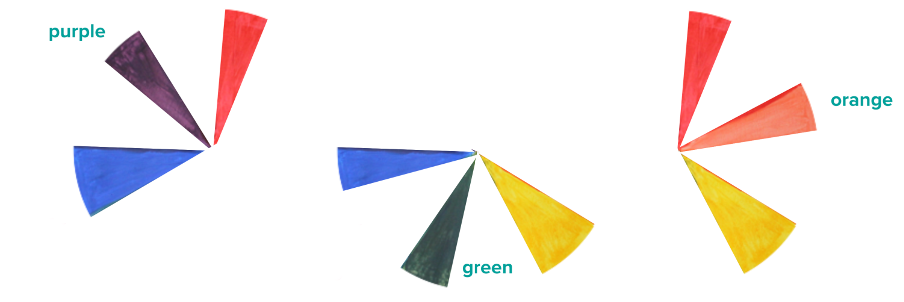
What are secondary colors?
In the our first lesson of our Color Theory Art Lesson Plans we learn about the primary colors of red, yellow and blue and noted that these are sometimes called the original colors, because they can’t be made by mixing any other colors together. Now let’s try some color mixing!
If you mix any pair of primary colors together in equal amounts you can create secondary colors. The secondary colors are orange, purple and green.
Red mixed with yellow makes orange.
Red mixed with blue makes purple.
Blue mixed with yellow makes green.
You’ll notice that the three secondary colors are equal distance apart from each other on the color wheel and they are placed midway between the primary colors they are made from.
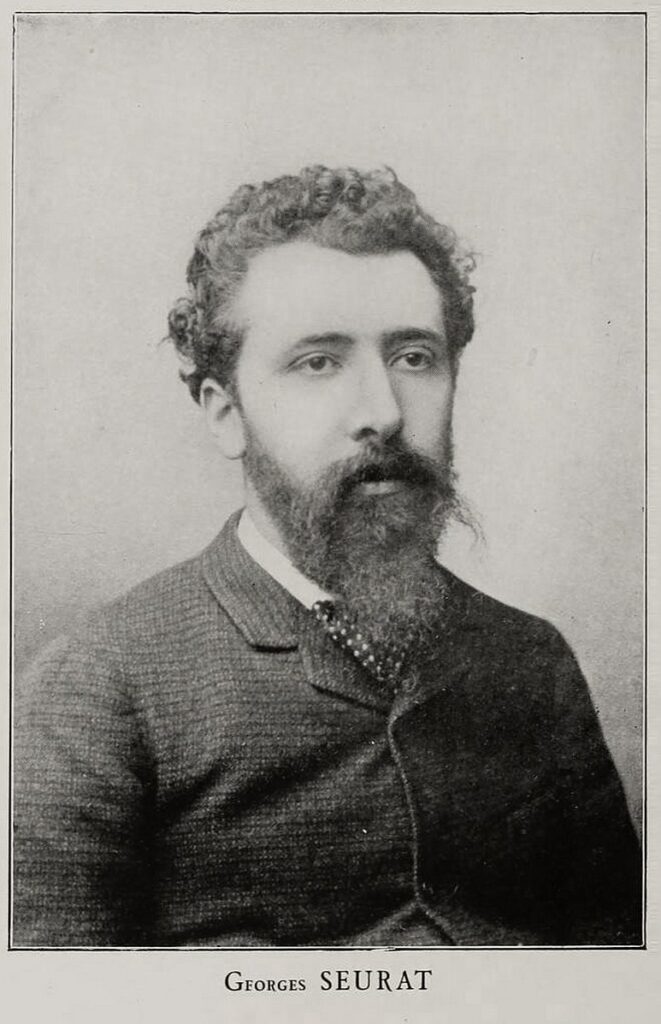
Meet famous artist Georges Seurat
Georges Seurat was a French painter. He was born in Paris in 1859 and died in 1891. His paintings featured scenes of life in Paris, including people picnicking in parks and swimming in the river Seine, and famous Paris landmarks such as the Eiffel Tower.
He is most famous for his use of the painting technique called pointillism.

Pointillism art
Pointillism means painting with tiny dots in pure colors which visually blend together to create a new color.
Most artists, if they want to paint with green, for example, would squeeze blue paint and yellow paint from their paint tubes and mix them together on their palette to make a green paint which they could then apply to their picture. Seurat would instead make dots of pure blue paint on his picture and then make dots of pure yellow paint in the same area of his picture. Our eyes and brain ‘read’ these two colors together and see it only as green.
Seurat used color theory in his paintings to combine colors to get the effect he wanted. He combined dots in pairs of the primary colors of red, yellow, and blue to make areas which looked like the secondary colors of green, purple and orange.
Red dots and yellow dots appear orange.
Blue dots and yellow dots appear green.
Blue dots and red dots appear purple.
Take a look at these examples of Georges Seurat’s art. As you look at them, answer these questions:
:: What can you see?
:: What colors can you see?
Zoom in on the pictures to see how Seurat applied the paint in dots.
The Seine Seen From La Grande Jatte, 1888
La Seine à la Grande-Jatte, 1888
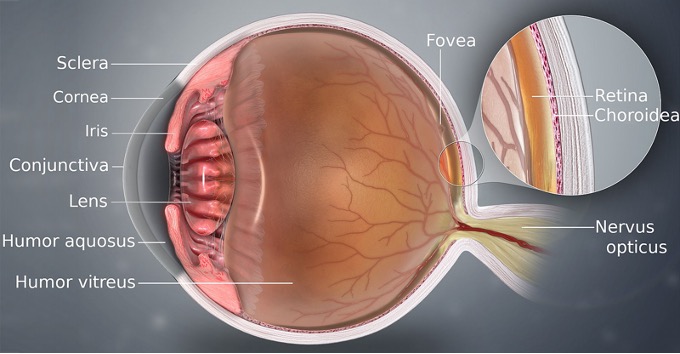
How does an eye work?
Do you know how eyes work? Do you think everyone sees color in the same way? Can everyone see all colors? And do things that appear red to you, for example, also look the same color to everyone else?
Your eyes and your brain work together to see. Light traves into the eye, to the retina which is at the back of your eye. The retina is covered in millions of cells called rods and cones. These cells detect the light and send signals to the brain. Rods can see in black and white and cones can see color. The cells work together with connecting nerve cells to send the brain enough information to work out what things you can see and what color they are.
Scientists think that most people can see about a million different colors.
(Parent / Teacher Note: Be aware that children might be anxious about seeing colors differently. You can skip the following sections if you think that best for your children. You might reassure your children that they don’t need to worry if they do see colors differently – many people do, most people don’t even realise they do, and everyone can adapt to living well with any differences.)
Some people don’t see color in the same way as everyone else, but they probably don’t realise it. Some people can see that two colors are different to each other but they don’t see the colors exactly the same as other people.
Some people have color impairment or what is commonly known as color blindness. The most common example of this is called red and green dichromatism, where people can not see the different between the colors red and green.
Some people have an extra type of rod in their retina which allows then to see colors that most other people can not, a kind of ‘super vision’.
Total color blindness, where someone only sees in black, white and shades of gray, is very rare.
Do you want to know if you see colors different to others? Online tests are not accurate because computer screens and mobile devices can show colors differently. Vision tests with a doctor or optician might be able to tell you if you see colors differently.
Some animals can see colors differently to humans. Most birds, fish and mammals see colors as we do. Some insects, including bees, can see light that has very short wavelengths, which humans can not see. This is called ultraviolet light. It can be hard to imagine what a bee sees because we have never seen anything like it.

What is a rainbow?
Do you know what a rainbow is? What makes a rainbow appear?
A rainbow isn’t really a “thing” and doesn’t happen in a particular place. We see a rainbow if we happen to be in the right place, and when the sunlight and weather are just right.
Rainbows are made by sunlight and water in the air, so we see them just after it rains. You can also see them around waterfalls and sea spray. The sun needs to be behind you to see a rainbow.
Light from the sun shines on a water droplet (a rain drop) and reflects off it. The light splits into its different wavelengths or colors. We see this as a rainbow with red at the top of the arc followed by orange, yellow, green, blue, and, on the bottom of the arc, purple.
A full rainbow is actually a circle but you’d need to be in just the right place on an airplane to see the complete circle. On the ground we only see part of the rainbow – an arc.
Sometimes you can see a double rainbow – with one fainter rainbow above the main one. This is caused by sunlight being re-reflected in the water droplet at a different angle. If you see a double rainbow you’ll notice the colors in it are reversed, with red at the bottom and violet at the top.
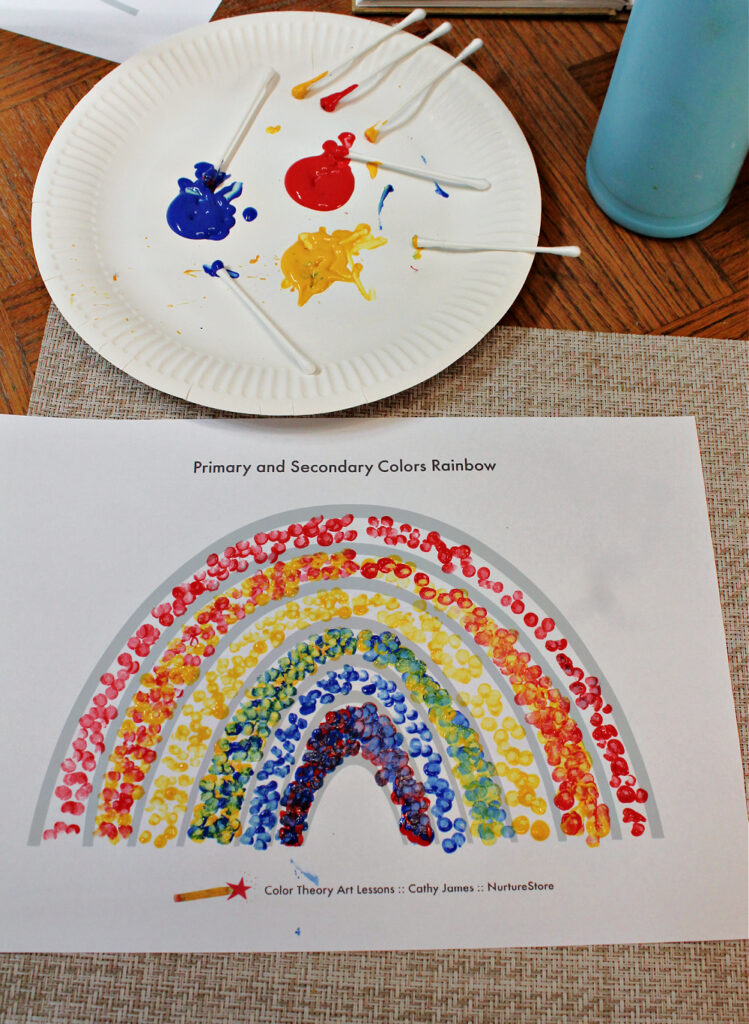
Make a Seurat-inspired pointillism rainbow
Let’s combine color theory and pointillism to make a rainbow.
Our art project inspired by Georges Seurat will be using two key elements:
:: we will use only the three primary colors of red, yellow and blue and we will mix them to make secondary colors
:: we will apply our color using Pointillism-style dots
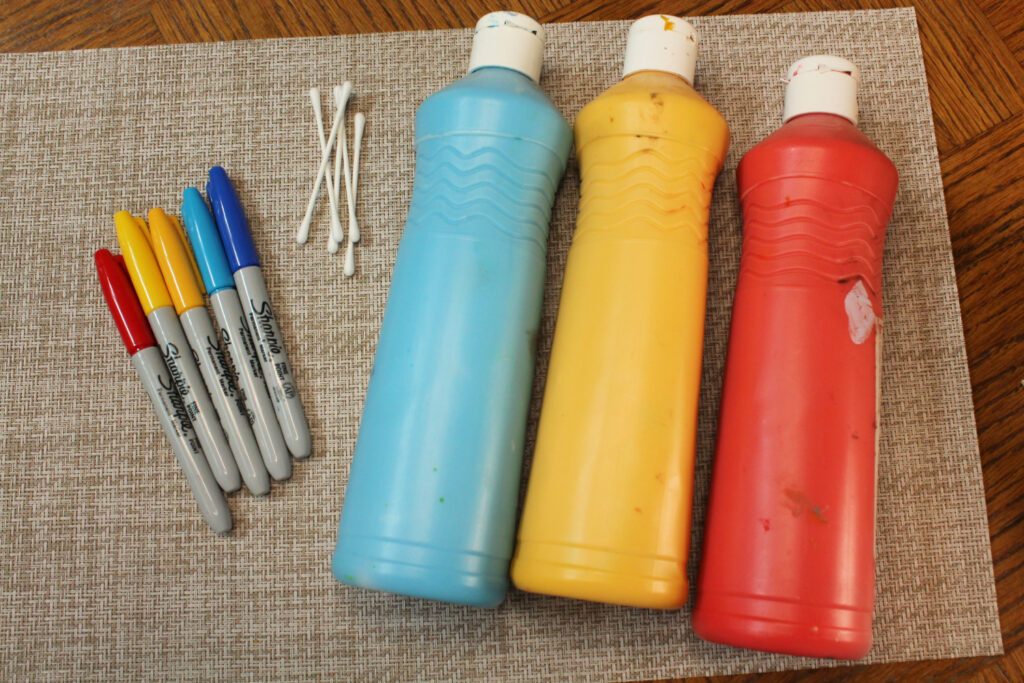
Materials needed
:: Rainbow Printable (from our Color Theory Art Lessons kit) or white card / paper
:: Red, blue and yellow paint or marker pens
:: Cotton buds (if using paint)
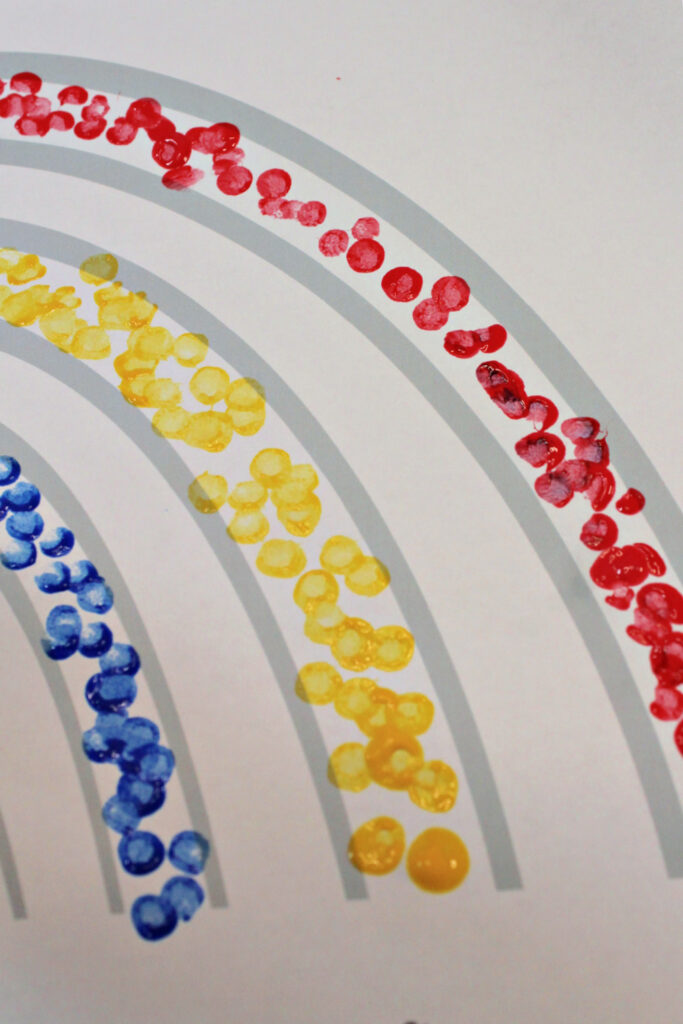
How to paint a rainbow using pointillism
Begin our pointillism art lesson by using the rainbow outline from our Color Theory Art Lessons kit or by drawing your own rainbow outline, with six bands, on a white sheet of paper or card.
You might like to use only paint or only markers or split the rainbow in half and use paint to fill one half and markers to fill the other half, as a contrast.
Use primary colors first. Fill in the red, yellow and blue bands of the rainbow using Pointillism-style dots of color.
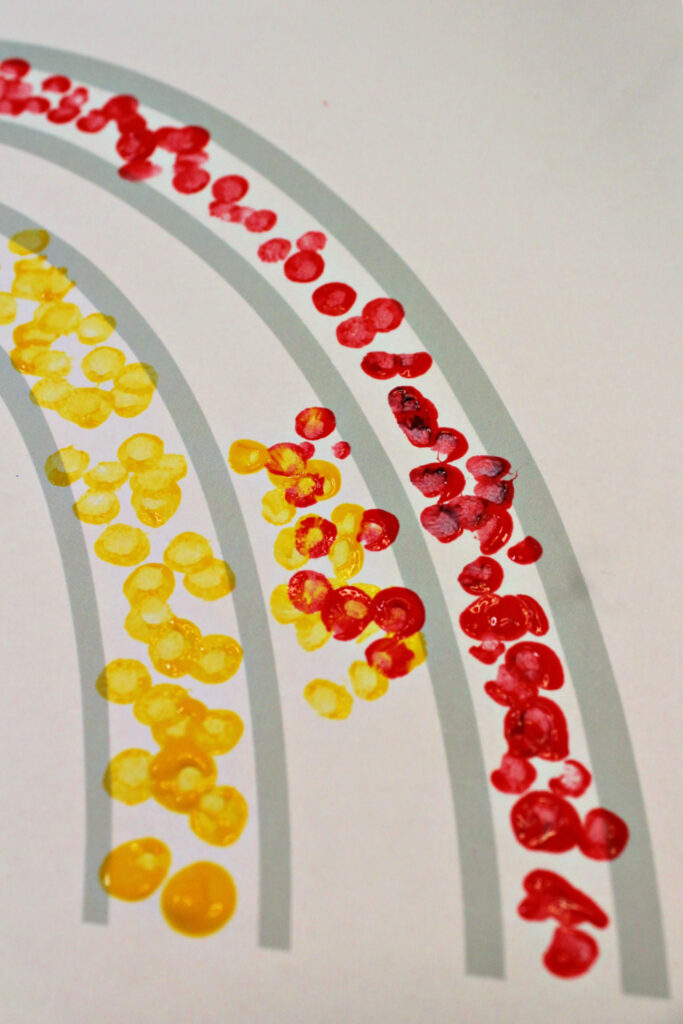
How to make secondary colors by mixing primary colors
Fill the band between the red and yellow ones with both red and yellow dots, to create the appearance of an orange band.
Fill the band between the yellow and blue ones with both yellow and blue dots, to create the appearance of a green band.
Fill the band below the blue one with both blue and red dots, to create the appearance of a purple band.

Variations and differentiations
To expand on this color-mixing project and explore different materials you might like to use all the different color materials you have, creating a rainbow with sections of paint, markers, chalk, oil pastels, and colored pencils.
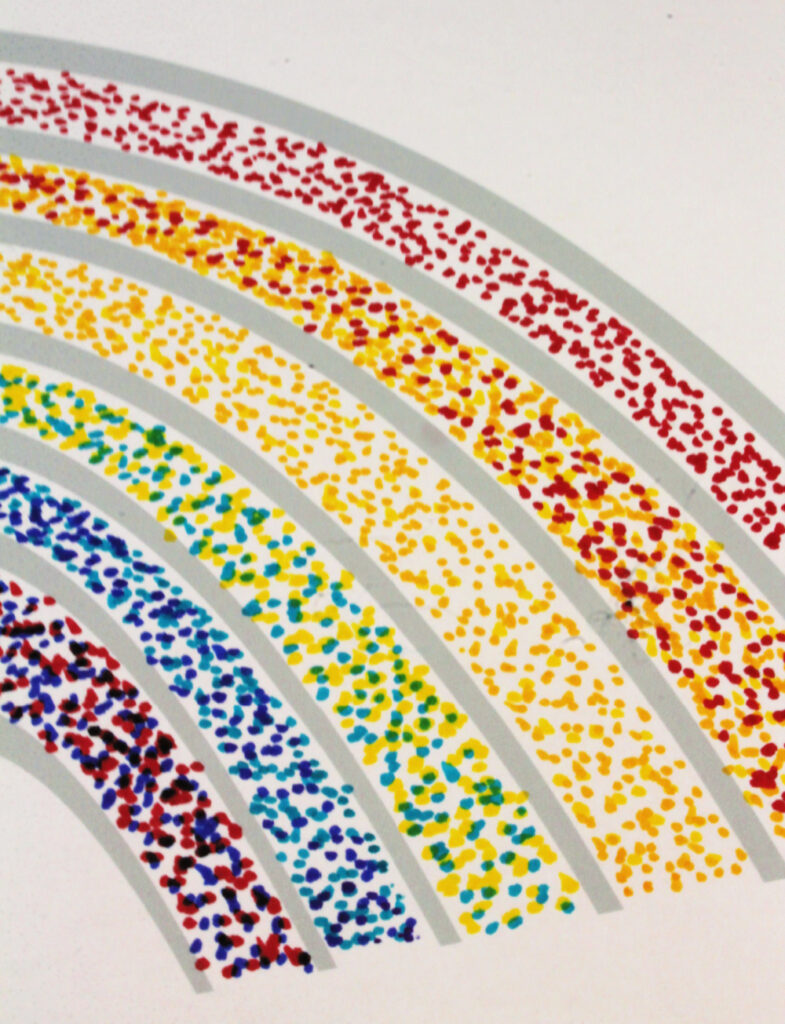
You might also create a collage rainbow. Use various pieces of red, yellow and blue papers to create the bands of the rainbow, still beginning with the primary red, yellow and blue bands and then mixing the collage papers to create the secondary color bands. You could also create a rainbow by layering primary colors of tissue paper or cellophane to achieve the mix of secondary colors.
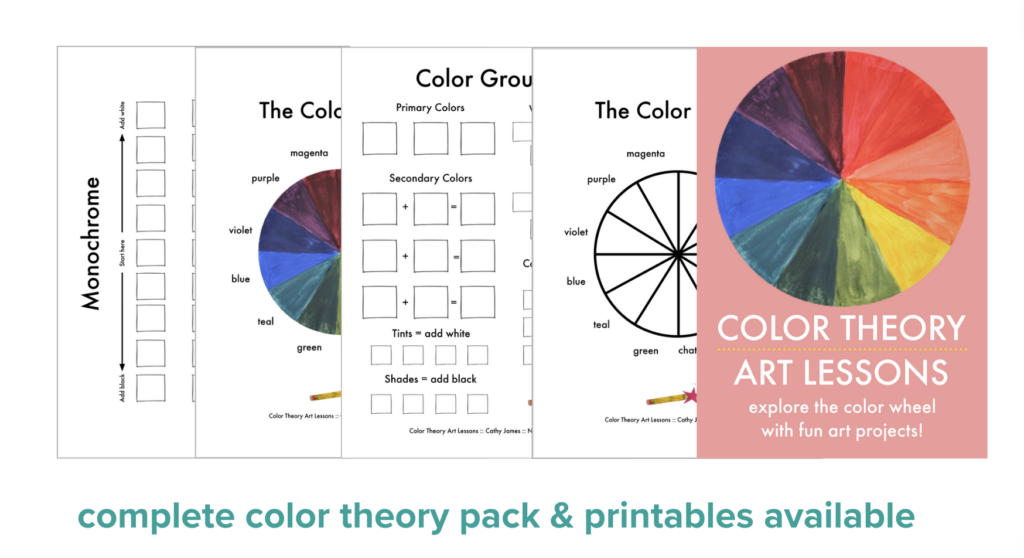
Get all our Color Theory art lesson plans and printables
Use our ready-made Color Theory Art Lesson Plans to explore more aspects of the color wheel through creative art projects. Our Color Theory curriculum gives you all the resources you need to learn about the color wheel and color theory and enjoy easy and fun art projects for every lesson, including the printables used in this pointillism lesson.
The kit also includes art history guides, famous artist profiles, and wider cross-curricular lessons in science, math, language arts and world culture, plus bonus printables and posters to make your teaching even easier.
See more details of our Color Theory curriculum and get your copy here.
